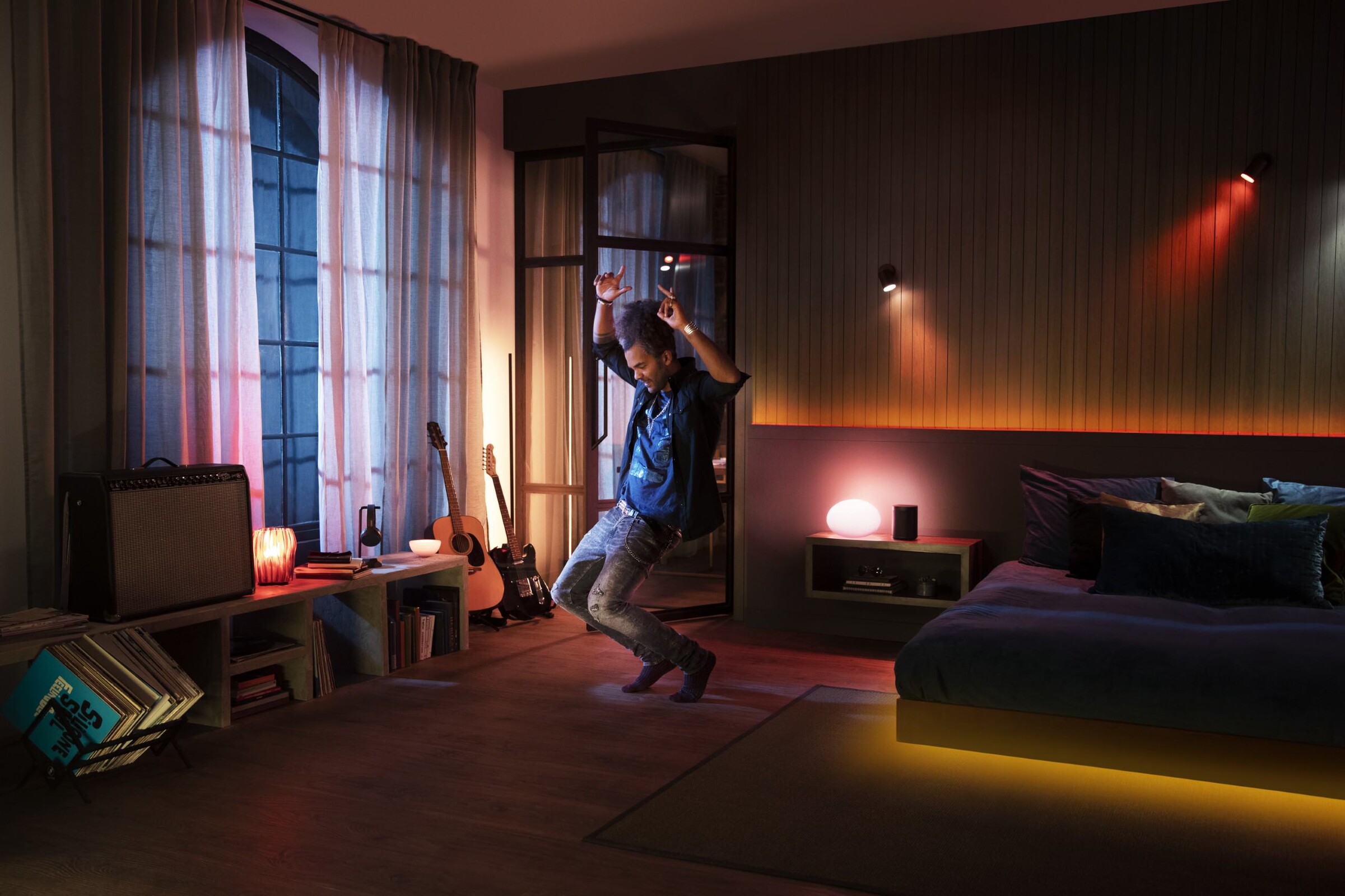

The SDK features vector-based maps that load quickly, allowing users to easily navigate 2D and 3D views, rotating and tilting the map with simple gestures inside your app.

The blog post also confirms that the SDK will work on the iPad Google has confirmed to The New York Times that a native iPad version of Maps is indeed coming. As detailed by Andrew Foster at the Google Geo Developers blog, the SDK – which requires signing up for API access – will allow developers to integrate Google Maps with their own apps, displaying embedded 2D or 3D Maps views with markers and info windows. You can read more on Philips’ website.Īlongside the launch of its official Maps app for iPhone, Google has also released a developer SDK to let third-party apps embed Google Maps directly.
#Ambify hue spotify software#
Right now, Philips’ hue API is promising and shows great potential for more forward-thinking software and hardware implementations.

An obvious implementation would be for health and fitness-monitoring accessories such as Nike’s FuelBand as far as rumors go, an Apple iWatch could integrate with hue to exchange an user’s data and personal stats ( Apple isn’t new to third-party collaborations of this kind). On the hardware side, it should be possible – at least in theory – to develop gadgets capable of combining personal data with hue to leverage Philips’ “smart” lighting system in completely new ways. With an SDK and API, developers can now take advantage of these concepts: aside from the “simple” remote control features, imagine apps that could activate specific hue settings when you’re reading or watching a movie, parse voice-based commands with dictation, or integrate with an iOS device’s Reminders, Calendars, or Location Services.

The hue already shipped with its own options for remote control and “presets” (called “recipes”) for different lighting settings aimed at providing users with ways to easily replicate specific color combinations based on photos (available in the app’s photo library) or targeted towards lifestyle improvements (such as waking users up in the morning with a gradual light increase). The API opens a lot of interesting possibilities for third-party software and hardware makers. An iOS app called Ambify lets users pair their music with hue lights here at MacStories, I linked to a video back in November showing an unofficial hue Python library that could work with Pythonista to automate the process of switching lights on and off. Prior to the official release of an API and SDK, third-party developers had already reverse-engineered Philips’ apps to create their own solutions to control hue’s system (based on a “bridge” that communicates with the actual lightbulbs). Also, we want to give them commitment that this is the API and we’re going to support it and it won’t change overnight. “Now what we want to do as Philips is we actually want to help and grow and encourage this community, and give them tools and proper documentation. We’re now at a point where there are already about 10 applications that have been shared and built from the unofficial developer community for new applications around Hue,” explained George Yianni, Hue System Architect in an interview. As reported by TechCrunch, Philips has released an API and iOS SDK for the hue, the company’s wireless lighting system that gives users control through an iOS app.


 0 kommentar(er)
0 kommentar(er)
